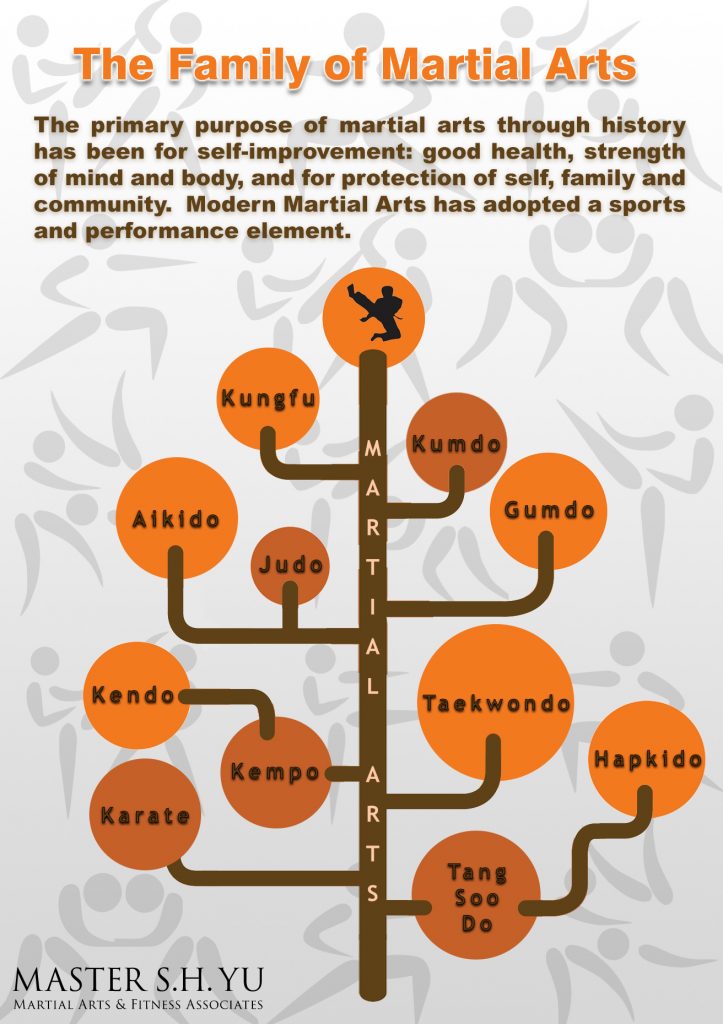Demystifying The Various Martial Arts Designs: From Karate To Taekwondo
Demystifying The Various Martial Arts Designs: From Karate To Taekwondo
Blog Article
Content Writer-Faber Husum
Are you tired of feeling overwhelmed by the vast world of martial arts? With so many designs to pick from, it can be easy to obtain lost in a sea of punches, kicks, and strange names. But worry not!
This conversation will certainly demystify the different fighting styles styles, taking you on a trip from the powerful strikes of Karate to the dynamic kicks of Taekwondo. Get ready to uncover the beginnings, strategies, and approaches behind these old art forms.
So, tighten your belt and prepare to embark on an enlightening exploration right into the exciting world of martial arts.
Beginnings of Martial Arts Styles
The beginnings of fighting styles styles can be mapped back to ancient civilizations and their demand for self-defense and fight strategies. Throughout background, various cultures developed their own distinct approaches of fighting, each with its very own collection of methods and approaches.
In China, as an example, fighting styles styles such as Martial art and Tai Chi were created as a means of protection and boosting physical and mental health.
In Japan, the samurai warriors created designs like Karate and Judo, focusing on technique, precision, and proficiency of the body.
Similarly, in Korea, Taekwondo became a fighting style highlighting high kicks, fast motions, and mental stamina.
historical european martial arts laid the structure for the varied range of martial arts designs that exist today, each with its very own abundant background and cultural value.
Methods and Training Approaches
To understand martial arts styles, practitioners have to find out various techniques and training methods.
Methods are the details motions and actions used in fight, such as strikes, kicks, tosses, and blocks. Various martial arts styles have their own one-of-a-kind collection of strategies that experts must master via extensive training.
Training methods differ relying on the design, yet they generally entail a mix of physical conditioning, drills, sparring, and forms.
Physical conditioning is important to build toughness, adaptability, and endurance. Drills help specialists refine their methods and boost their speed and precision.
https://karateforkids42108.blogoxo.com/33385247/recognizing-the-different-designs-of-martial-arts-educating allows professionals to practice their strategies in a managed, reasonable environment. Kinds, additionally called kata, are cut-and-dried series of activities that aid practitioners establish muscle memory and focus.
Philosophies and Concepts
Exploring the philosophies and principles of martial arts styles can supply you with a deeper understanding of your chosen discipline. where can i watch bulletproof monk has its own one-of-a-kind approach and set of leading concepts that shape the way it's practiced.
As an example, Karate stresses discipline, regard, and self-discipline. https://martial-arts-for-kids-lic32197.madmouseblog.com/13709387/which-style-of-young-people-martial-arts-is-suitable-for-your-kid educates specialists to focus their minds and bodies, enabling them to safeguard themselves while keeping a feeling of inner tranquility.
On the other hand, Taekwondo positions a solid focus on rate, agility, and adaptability. Its principles are rooted in the tenets of courtesy, honesty, determination, self-control, and unbeatable spirit.
Final thought
Since you have actually discovered the beginnings, techniques, and approaches of different fighting styles styles, you have a deeper understanding of these old techniques.
Imagine a young karate trainee, experimenting undeviating resolution and focus, breaking through boards with a powerful punch.
Their trip showcases the devotion and strength required to master a fighting style, advising us that with technique and willpower, anything is possible.
